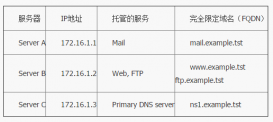所谓压缩就是将原有的文件通过不同的编码技术进行运算,以减少数据存储所需要的空间,使用前再利用解压缩还原源文件的内容即可。
和windows一样,在linux下也存在多种压缩与解压缩方法。
1、zip压缩与解压缩
zip是最为广泛使用的压缩程序,经它压缩的文件会产生扩展名为zip的压缩文件,而且这种格式在多种系统上可以使用,像windows中的winzip
下面看一下在linux中如何建立zip文件。
我们在终端中输入zip会出现这个命令的一些介绍和参数的意义。
xiaopeng@ubuntu:~/test$ zip
Copyright (c) 1990-2006 Info-ZIP - Type 'zip "-L"' for software license.
Zip 2.32 (June 19th 2006). Usage:
zip [-options] [-b path] [-t mmddyyyy] [-n suffixes] [zipfile list] [-xi list]
The default action is to add or replace zipfile entries from list, which
can include the special name - to compress standard input.
If zipfile and list are omitted, zip compresses stdin to stdout.
-f freshen: only changed files -u update: only changed or new files
-d delete entries in zipfile -m move into zipfile (delete files)
-r recurse into directories -j junk (don't record) directory names
-0 store only -l convert LF to CR LF (-ll CR LF to LF)
-1 compress faster -9 compress better
-q quiet operation -v verbose operation/print version info
-c add one-line comments -z add zipfile comment
-@ read names from stdin -o make zipfile as old as latest entry
-x exclude the following names -i include only the following names
-F fix zipfile (-FF try harder) -D do not add directory entries
-A adjust self-extracting exe -J junk zipfile prefix (unzipsfx)
-T test zipfile integrity -X eXclude eXtra file attributes
-y store symbolic links as the link instead of the referenced file
-R PKZIP recursion (see manual)
-e encrypt -n don't compress these suffixes
下面我们就最简单的实验一下。我们就是把当前目录下文件名以test开头的所有文件压缩文一个文件,并可以查看一下压缩比。(红色是我的注释)
xiaopeng@ubuntu:~/test$ ls -lh
总用量 24K
-rw-r--r-- 1 xiaopeng xiaopeng 212 2009-06-25 14:13 test1
-rw-r--r-- 1 xiaopeng xiaopeng 1.3K 2009-06-25 14:13 test2
-rw-r--r-- 1 xiaopeng xiaopeng 3.4K 2009-06-25 14:14 test3
-rw-r--r-- 1 xiaopeng xiaopeng 9.9K 2009-06-25 14:14 test4
xiaopeng@ubuntu:~/test$ zip test.zip test*
zip命令后面先跟压缩后的文件名,这里是test.zip,当然后缀名不是必须的。然后跟要压缩的文件名。这里用的test*指的是全部以test开头的文件,包括test1 test2 test3 test4
adding: test1 (deflated 30%) 这里显示的是压缩比
adding: test2 (deflated 65%)
adding: test3 (deflated 64%)
adding: test4 (deflated 73%) 大体可以看出源文件越大,压缩比就越大
xiaopeng@ubuntu:~/test$ ls -lh
总用量 32K
-rw-r--r-- 1 xiaopeng xiaopeng 212 2009-06-25 14:13 test1
-rw-r--r-- 1 xiaopeng xiaopeng 1.3K 2009-06-25 14:13 test2
-rw-r--r-- 1 xiaopeng xiaopeng 3.4K 2009-06-25 14:14 test3
-rw-r--r-- 1 xiaopeng xiaopeng 9.9K 2009-06-25 14:14 test4
-rw-r--r-- 1 xiaopeng xiaopeng 5.0K 2009-06-25 14:17 test.zip
xiaopeng@ubuntu:~/test$
上面是压缩了相同类型的文件,其实也可以把不同类型的文件压缩到一起。有时候为了节省硬盘空间,可以在建立压缩文件后,自动删除原始文件,此时只要带一个 -m 的参数就可以。
xiaopeng@ubuntu:~/test$ ls -lh
总用量 24K
-rw-r--r-- 1 xiaopeng xiaopeng 212 2009-06-25 14:13 test1
-rw-r--r-- 1 xiaopeng xiaopeng 1.3K 2009-06-25 14:13 test2
-rw-r--r-- 1 xiaopeng xiaopeng 3.4K 2009-06-25 14:14 test3
-rw-r--r-- 1 xiaopeng xiaopeng 9.9K 2009-06-25 14:14 test4
xiaopeng@ubuntu:~/test$ zip -m test.zip test* 带参数-m
updating: test1 (deflated 30%)
updating: test2 (deflated 65%)
updating: test3 (deflated 64%)
updating: test4 (deflated 73%)
xiaopeng@ubuntu:~/test$ ls -lh
总用量 8.0K
-rw-r--r-- 1 xiaopeng xiaopeng 5.0K 2009-06-25 14:26 test.zip
xiaopeng@ubuntu:~/test$
可以看出 原始文件已经被删除,只有压缩文件留下了。
在压缩一些目录的时候,经出在目录中会有子目录,此时根据子目录中的文件是否压缩分为两种情况,一种是压缩,一种是忽略自录中的内容,如果选择压缩子目录,则使用-r参数,如果不压缩,则使用-j 参数
下面举例,一个是-r 一个是-j
xiaopeng@ubuntu:~/test$ ls -lh
总用量 28K
drwxr-xr-x 2 xiaopeng xiaopeng 4.0K 2009-06-25 14:31 pdf
-rw-r--r-- 1 xiaopeng xiaopeng 212 2009-06-25 14:13 test1
-rw-r--r-- 1 xiaopeng xiaopeng 1.3K 2009-06-25 14:13 test2
-rw-r--r-- 1 xiaopeng xiaopeng 3.4K 2009-06-25 14:14 test3
-rw-r--r-- 1 xiaopeng xiaopeng 9.9K 2009-06-25 14:14 test4
xiaopeng@ubuntu:~/test$ zip -r test.zip * 压缩当前目录所有内容,r 参数说明pdf这个子目录中的内容也压缩
adding: pdf/ (stored 0%)
adding: pdf/case_Contact.pdf (deflated 10%)
adding: pdf/case_KRUU.pdf (deflated 9%)
adding: pdf/case_howard_county_library.pdf (deflated 24%)
adding: test1 (deflated 30%)
adding: test2 (deflated 65%)
adding: test3 (deflated 64%)
adding: test4 (deflated 73%)
xiaopeng@ubuntu:~/test$
下面的情况是子目录不压缩
xiaopeng@ubuntu:~/test$ ls -l
总用量 28
drwxr-xr-x 2 xiaopeng xiaopeng 4096 2009-06-25 14:31 pdf
-rw-r--r-- 1 xiaopeng xiaopeng 212 2009-06-25 14:13 test1
-rw-r--r-- 1 xiaopeng xiaopeng 1233 2009-06-25 14:13 test2
-rw-r--r-- 1 xiaopeng xiaopeng 3412 2009-06-25 14:14 test3
-rw-r--r-- 1 xiaopeng xiaopeng 10091 2009-06-25 14:14 test4
xiaopeng@ubuntu:~/test$ zip -j test.zip *
adding: test1 (deflated 30%)
adding: test2 (deflated 65%)
adding: test3 (deflated 64%)
adding: test4 (deflated 73%)
子目录pdf被忽略
xiaopeng@ubuntu:~/test$
令外一个技巧: 某些文件因为编码的原因,已经大幅的减少了文件的大小,如GIF,JPG 等格式,在用zip压缩几乎没什么作用而浪费了时间,此时可一用-n参数直接保存这些文件而不压缩。例如:
xiaopeng@ubuntu:~/test$ ls -lh
总用量 68K
-rw-r--r-- 1 xiaopeng xiaopeng 18K 2009-06-04 21:18 duality.jpg
-rw-r--r-- 1 xiaopeng xiaopeng 212 2009-06-25 14:13 test1
-rw-r--r-- 1 xiaopeng xiaopeng 1.3K 2009-06-25 14:13 test2
-rw-r--r-- 1 xiaopeng xiaopeng 3.4K 2009-06-25 14:14 test3
-rw-r--r-- 1 xiaopeng xiaopeng 9.9K 2009-06-25 14:14 test4
-rw-r--r-- 1 xiaopeng xiaopeng 23K 2009-06-10 15:07 test.jpg
xiaopeng@ubuntu:~/test$ zip -n .jpg test.zip *
adding: duality.jpg (stored 0%)
adding: test1 (deflated 30%)
adding: test2 (deflated 65%)
adding: test3 (deflated 64%)
adding: test4 (deflated 73%)
adding: test.jpg (stored 0%)
jpg格式的没有压缩而是直接保存了
xiaopeng@ubuntu:~/test$
如果需要直接保存的格式多于一个,可以用冒号隔开 如: -n .jpg: .mpg
小技巧,有时候一个目录下要压缩的文件很多,但是有那么很少的几个不压缩,那么我们可以用-x参数来排除这几个不压缩的。例如
xiaopeng@ubuntu:~/test$ ls
duality.jpg test1 test2 test3 test4 test.jpg test.zip
xiaopeng@ubuntu:~/test$ zip -n .jpg test.zip * -x test2 不压缩test2
updating: duality.jpg (stored 0%)
updating: test1 (deflated 30%)
updating: test3 (deflated 64%)
updating: test4 (deflated 73%)
updating: test.jpg (stored 0%)
xiaopeng@ubuntu:~/test$
可以看到test2没有被压缩,而是直接跳过了它。
压缩链接,zip会先读取该链接的指向的原文件的内容,然后再压缩,而且压缩完了,该链接也就不存在了。
另外,压缩率也是可以调整的。等级是1到9,1最低,9最高,默认是6 。我们可以用1和9来比较下,压缩率。
xiaopeng@ubuntu:~/test$ zip -1 low.zip *
adding: test1 (deflated 30%)
adding: test2 (deflated 63%)
adding: test3 (deflated 62%)
adding: test4 (deflated 70%)
xiaopeng@ubuntu:~/test$ zip -9 high.zip *
adding: low.zip (deflated 4%)
adding: test1 (deflated 30%)
adding: test2 (deflated 65%)
adding: test3 (deflated 64%)
adding: test4 (deflated 73%)
因为文件都比较小,效果不是很明显,但是9的压缩率确实高了一点点。
压缩率高,节省空间,但是压缩时间要长,压缩率低,节省空间少,但是用时间少,所以我们要合理选择压缩率,一般都用默认。
zip文件解压缩。这个比较简单,就是unzip命令。
xiaopeng@ubuntu:~/test$ ls
test.zip
xiaopeng@ubuntu:~/test$ unzip test.zip
Archive: test.zip
inflating: test1
inflating: test2
inflating: test3
inflating: test4
xiaopeng@ubuntu:~/test$
当然也可以用-x参数来指定哪个文件不需要压缩。
xiaopeng@ubuntu:~/test$ unzip test.zip -x test3 test3不需要压缩出来
Archive: test.zip
inflating: test1
inflating: test2
inflating: test4
xiaopeng@ubuntu:~/test$
还有一个很有用的参数,-Z ,注意是大写的Z 。作用是查看压缩文件的内容。就像windows中的winzip,我们不用解压缩,也可以打开看看里面有什么文件,文件的类型什么。比如我想看看test.zip里面的内容,而又不想把这个解压缩了再看,可以如下操作。
xiaopeng@ubuntu:~/test$ unzip -Z test.zip
Archive: test.zip 5069 bytes 4 files
-rw-r--r-- 2.3 unx 212 tx defN 25-Jun-09 14:13 test1
-rw-r--r-- 2.3 unx 1233 tx defN 25-Jun-09 14:13 test2
-rw-r--r-- 2.3 unx 3412 tx defN 25-Jun-09 14:14 test3
-rw-r--r-- 2.3 unx 10091 tx defN 25-Jun-09 14:14 test4
4 files, 14948 bytes uncompressed, 4567 bytes compressed: 69.4%
xiaopeng@ubuntu:~/test$
当然除了这些参数外,还有很多参数可以使用,这里就不一一实验了,我们可以在使用的过程中加以掌握。
2、zip与 tar
如果你在Linux里面安装过软件压缩包,对这个以.tar.gz为后缀的压缩文件不会陌生,比如我们在Linux QQ 的下载页面http://im.qq.com/qq/linux/download.shtml ,就会看到其中一个安装包就是.tar.gz包。
这种包带两个后缀是有原因的,gz和tar 是分别由两种程序产生的。gz时由gzip压缩而成的压缩文件,压缩效果和zip差不多,但是和zip最大的不同在于,gzip无法把很多个单一文件压缩成一个单一文件,所以tar就有了用武之地,tar不是什么压缩程序,它是用来打包文件的。tar和gzip一见如故,两个人合作起来实现压缩,也就是当多个文件压缩时,先用tar把这些文件打包,成为.tar的包,然后再由gzip压缩这个包,于是就有了.tar.gz的文件格式。
首先先看一下gzip和 gunzip的应用。gzip的用法很简单,后面加上要压缩的文件名就行。
xiaopeng@ubuntu:~/test$ ls -lh
总用量 24K
-rw-r--r-- 1 xiaopeng xiaopeng 212 2009-06-25 15:49 test1
-rw-r--r-- 1 xiaopeng xiaopeng 1.3K 2009-06-25 14:13 test2
-rw-r--r-- 1 xiaopeng xiaopeng 3.4K 2009-06-25 14:14 test3
-rw-r--r-- 1 xiaopeng xiaopeng 9.9K 2009-06-25 14:14 test4
xiaopeng@ubuntu:~/test$ gzip test1
xiaopeng@ubuntu:~/test$ ls -lh
总用量 24K
-rw-r--r-- 1 xiaopeng xiaopeng 173 2009-06-25 15:49 test1.gz
-rw-r--r-- 1 xiaopeng xiaopeng 1.3K 2009-06-25 14:13 test2
-rw-r--r-- 1 xiaopeng xiaopeng 3.4K 2009-06-25 14:14 test3
-rw-r--r-- 1 xiaopeng xiaopeng 9.9K 2009-06-25 14:14 test4
注意和zip的不同,只要在命令后加上要压缩的文件名即可,系统会自动为生成的压缩文件起名为原文件名加后缀.gz ,而且原文件在压缩完成后会被删除。
解压缩用gunzip
xiaopeng@ubuntu:~/test$ gunzip *.gz
xiaopeng@ubuntu:~/test$ ls
test1 test2 test3 test4
xiaopeng@ubuntu:~/test$
完成后以前的压缩文件test1.gz也会被删除。
同样gzip在解压前也可以查看文件内容,用参数-l,
gzip也支持压缩率修改,为1到9,和zip相同。
下面看tar的用应。tar是用来打包文件的,打包后的包的大小和以前所有原文件大小的和是相等的,(其实大小是不相等的,打完包后的大小大于源文件的大小和,这个可以验证一下。《Ubuntu 入门到精通》说一样大,显然是不对的)也就是说tar没有压缩的效果。tar有非常多的参数,可以通过在线帮助文档查看,或者用--help命令查看。这里我们只用简单用到几个。
首先是多个文件打包。看例子。
xiaopeng@ubuntu:~/test$ ls
test1 test2 test3 test4
xiaopeng@ubuntu:~/test$ tar -cvf test.tar *
是把当前目录下的所有文件打包成test.tar 几个参数的意义为: c(Creat)建立新文件 v(Verbose)显示命令执行时的信息 f(File)指定打包为文件形式。
test1
test2
test3
test4
xiaopeng@ubuntu:~/test$ ls
test1 test2 test3 test4 test.tar
xiaopeng@ubuntu:~/test$
要解开tar文件,只需把参数中的c改为x(eXtract)即可
xiaopeng@ubuntu:~/test$ ls
test.tar
xiaopeng@ubuntu:~/test$ tar -xvf test.tar
test1
test2
test3
test4
xiaopeng@ubuntu:~/test$ ls
test1 test2 test3 test4 test.tar
xiaopeng@ubuntu:~/test$
下面我们看一下tar和gzip合作完成对4个文件的压缩。步骤是先用tar打包,然后对这个.tar包用gzip压缩,最后得到.tar.gz文件。例子:
xiaopeng@ubuntu:~/test$ ls
test1 test2 test3 test4
xiaopeng@ubuntu:~/test$ tar cvf test.tar * 首先打包成test.tar
test1
test2
test3
test4
xiaopeng@ubuntu:~/test$ ls
test1 test2 test3 test4 test.tar
xiaopeng@ubuntu:~/test$ gzip test.tar 把test.tar用gzip压缩成test.tar.gz 压缩包。
xiaopeng@ubuntu:~/test$ ls
test1 test2 test3 test4 test.tar.gz
xiaopeng@ubuntu:~/test$
解压.tar.gz包时,和压缩过程相反,现解压,再tar把包打开。
xiaopeng@ubuntu:~/test$ ls
test.tar.gz
xiaopeng@ubuntu:~/test$ gunzip test.tar.gz 先用gunzip把.tar.gz包解压缩
xiaopeng@ubuntu:~/test$ ls
test.tar
xiaopeng@ubuntu:~/test$ tar xvf test.tar 然后用tar把.tar包打开
test1
test2
test3
test4
xiaopeng@ubuntu:~/test$ ls
test1 test2 test3 test4 test.tar
xiaopeng@ubuntu:~/test$
还可以tar 和gzip同时实现的,只要在tar参数加一个z即可 tar -xvfz test.tar.gz 即可实现上面两个命令的功能。
还是比较好理解的。
















